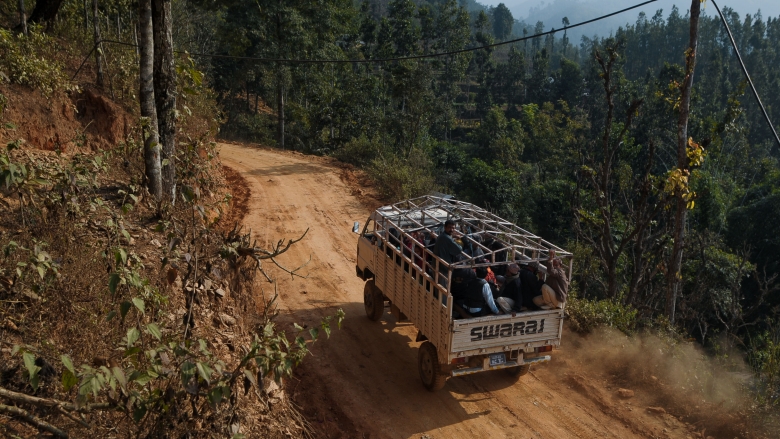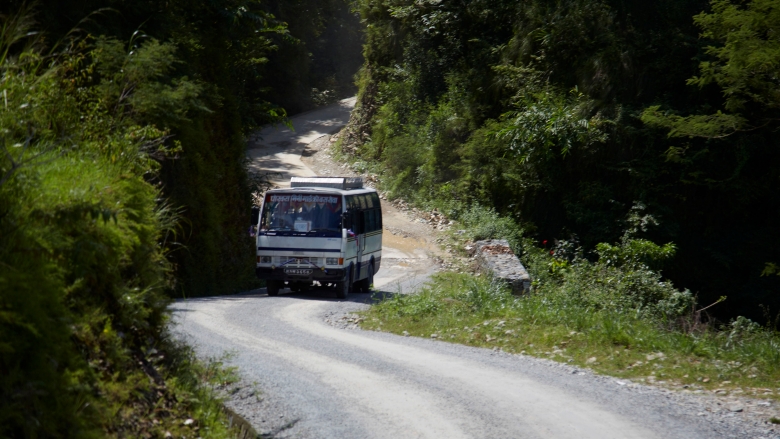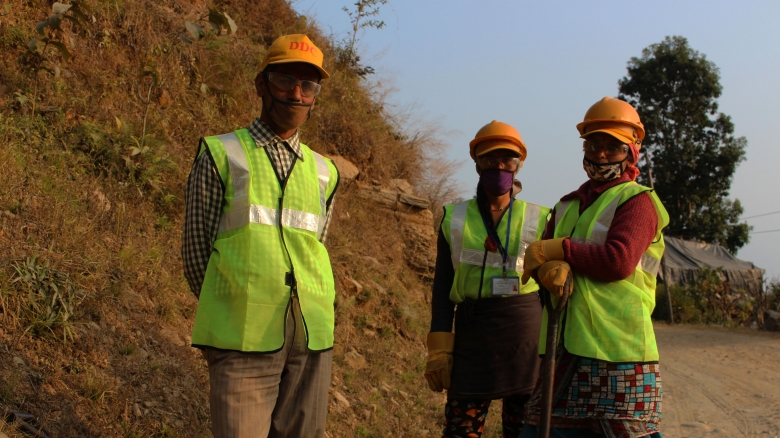The rugged terrain of Nepal poses formidable natural obstacles to road construction. Even where roads are built, they are barely operable during the rainy season. Though connectivity has improved significantly in the past few years, there is still a long way to go.
Improved connectivity ensures economic growth reaches rural areas. Access to markets, social and economic services, and emergency assistance directly depend on the quality of transport infrastructure available to rural communities. Community leaders in remote outreaches of Nepal invariably list reliable roads as a top priority.
World Bank and the Transport Sector in Nepal
The World Bank has partnered with Nepal in the transport sector for several decades to support connectivity and improve access to markets for the poor. This partnership also supports the Government’s all-weather upgrading and maintenance efforts for both national and rural roads.
Since the 1970s, the World Bank has funded 12 roads projects in Nepal, to expand rural access, support the rehabilitation and maintenance of national highways, as well as improve its network of bridges.
From iconic projects like the Karnali Bridge that first connected territories east and west of the river in the early 1990s, to recent efforts to link historically remote and underdeveloped regions in far western Nepal with all-weather roads, the achievements have been significant.
For example, Nepal’s road network totalled 2,700 kilometers in the early 1970s. Now it spans over 42,000 kilometers. Half of the population now enjoys access to paved roads. Travel time, on average, has dropped nearly 80 percent.
However challenges persist, especially in rural transport. In hill areas, one-third of residents walk more than four hours to reach an all-season road and this is worse in the mountain regions. Meanwhile, road safety is paramount, especially during the treacherous wet season when fatalities rise dramatically. This needs to be addressed urgently through multiple fronts such as engineering improvements, traffic regulation, training, awareness and law enforcement.
Strengthening Rural Connectivity
As part of the World Bank’s continuing efforts to help improve rural connectivity, one priority is to provide reliable roads for communities in 36 districts - home to more than half of Nepal’s poor. Nepal’s roads program helps these districts upgrade, rehabilitate and maintain rural transport infrastructure for all-weather movement, generating economic opportunities and reducing the vulnerability of excluded and marginalized groups.
Over 1700 km of roads have been upgraded to all-season standard over the past 15 years. 164 trail bridges have also been constructed.
More recently, Nepal’s road programs have enlarged their focus to include monitoring by beneficiaries as well as civil society and private sector organizations.



